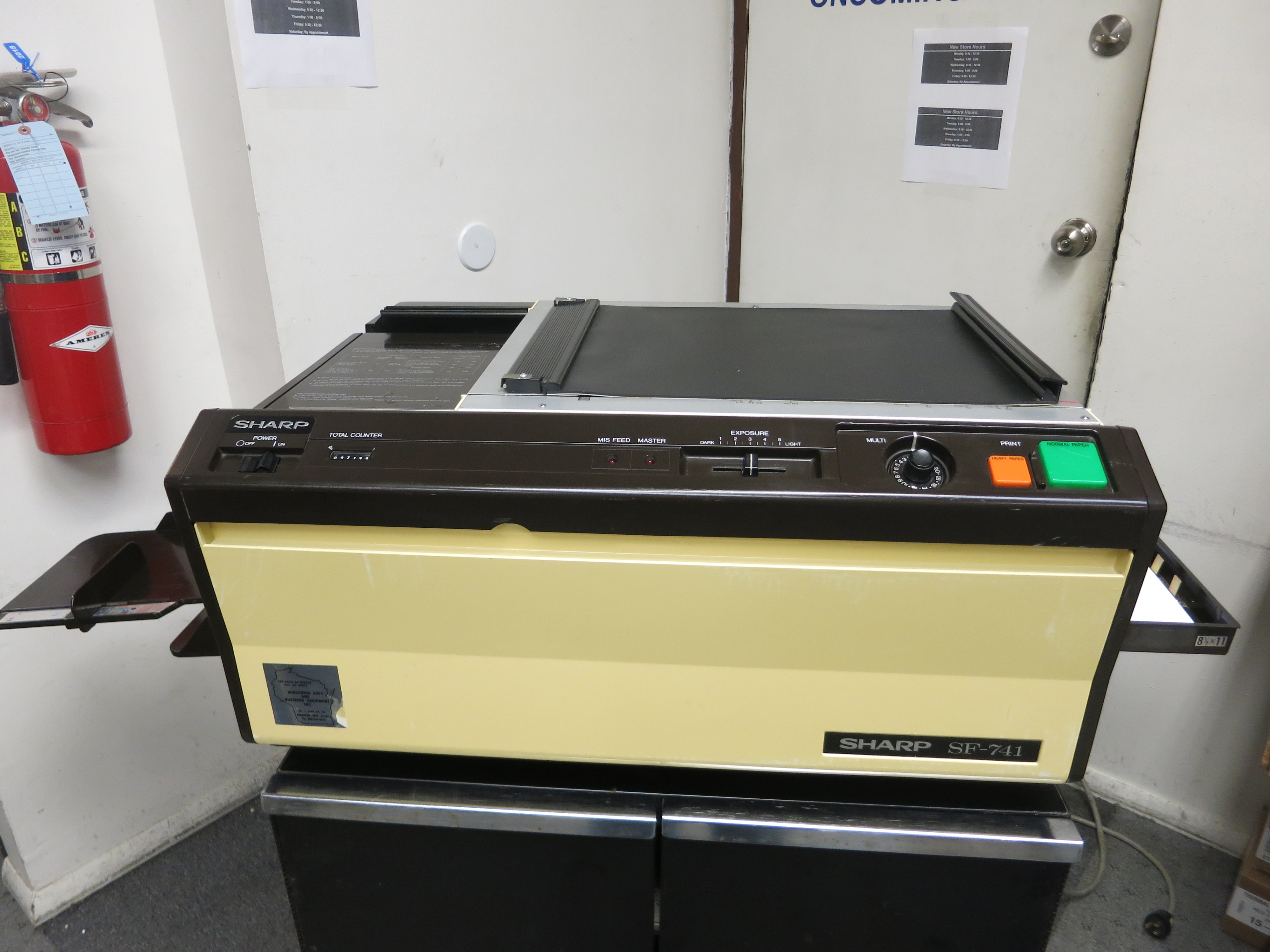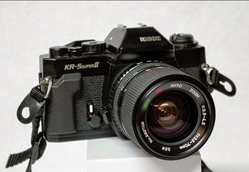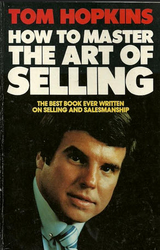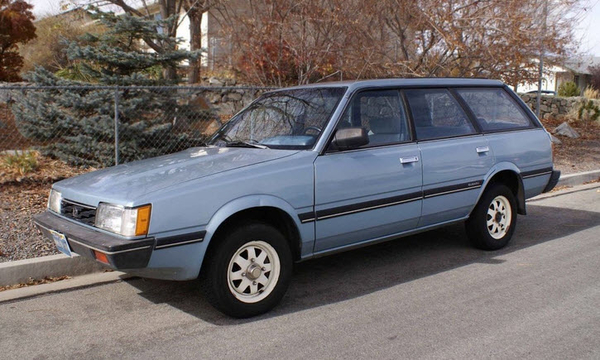Frank and I have know each other for so many years, even though we only live a few states apart we've never had the chance to meet in person. I'm hoping this is the year we get to meet.
Frank agreed to give us some in-site surrounding his career in our industry. I'll be posting Franks linkedin link at the end of this story.
Selling Copiers in the Eighties
Art: How did you find your way into the copier industry?
Frank: Art – first, many thanks for including me in this. Your friendship and insight has meant much to me over the years.
I first got into the business at the beginning of 1988, after spending 6 months working on the Stock Exchange in London after graduating UVA. I had experience in sales during college, and I minored in Computer Science, so I thought a career in Computer Sales would be a great fit. Of course, no one would hire me as I had NO Computer Sales Experience – fools! My Girlfriend and I had just moved to the DC area, and one Sunday she was reading the Washington Post classifieds and came across a Sales Position, with NO experience required, at Commonwealth Copy Products. Up to that point, I had never even thought that people sold copiers. I went on two interviews, got the job and started the beginning of February in 1988 as a sales rep on the First-Ever Downtown DC Mita Sales Team. I hit quota 23 out of the next 24 months – it was a great experience for me.
Art: Damn, that's quite the accomplishment! With Mita what was your favorite model to sell?
Frank: Back then, we had the DC 4085 as our top product, but then we got the 5585 that turned into the 5685 – a rock-solid analog machine of which I sold a pile.
Art: Okay, so key question I ask everyone. What was the percentage of copier sales people that made it past two years and why made them last or not last so long?
Frank: Well, I think about 20%, or less, made it two years. But we figured that if you lasted 6 months, you could make a career of it.
Art: Ah the eighties, those were some great times. What did you like most about your job in the eighties?
Frank: Having been a CS minor, I was intrigued by Technology, what made everything work and Networks. With that said, Digital Copiers were scarce, but the foreseen future. In 1993, I was selling Canon, and the GP20 was introduced, and it was a pretty bad product as it took ages to connect.
The subsequent GP30 and GP55 were MUCH better machines. Canon still ruled the color market with the CLC’s, but Ricoh was making some headway and chipping away at Canon’s Market share, but B&W Digital still ruled the day.
In 1997, I went to work for Toshiba America, and the 55, 65 and 85 ppm B&W Digital machines were bulletproof. At the point, we had the CLC 1150 and the Xerox Doc12 as the premier color machines running at 11 and 12ppm. Toshiba launched the FC22 toward the end of the 90’s that took color to 22ppm – sold a ton. Then Toshiba followed that unit with the FC310 and then the FC3100. 31ppm in color that was groundbreaking – wax toner with no fuser oil. It was a pretty exciting time to be in the business to witness the changes and growth of Digital.
Art: Haha, not fuser oil ![]() , it's only us old timers that know what fuser oil was used for! Okay so what did you dislike most about your job in the eighties?
, it's only us old timers that know what fuser oil was used for! Okay so what did you dislike most about your job in the eighties?
Frank: Contact Management was NOT the CRM that we have today! The old Card Boxes with Index Contact Cards was simple, but left a lot open to costly mistakes.
Art: How about compensation? What was your plan like, was there a salary, what is just commissions or was there a mix of salary and commissions?
Frank: In the beginning, there was a $12K Salary, commission and monthly bonus if you hit quota. Later there was a non-recoverable draw of $36K and up. Meaning, you paid back your draw each month before extra commission and bonuses, but if you did not cover your draw, the balance did NOT roll over to the next month.
Art: Frak, $12K, I can't remember what my starting pay for sales was in 1981. However I do remember the commission were 50% of the GP. Can you tell me about how you went about finding new business, and what was your favorite of those methods and why?
Frank: It is the same as today – hard work and repetition. However, back then it was knocking on doors, 150-300 Phone calls and snail mail mailers each week. Today, the repetitive contact is still required, but it is augmented with Email, Trickle Advertising, Social Media, etc.
Art: Amazing after all of these years it's still about making the calls. What was the first sales book that you read that and what did you take away from it?
Frank: I think most of us back then read K.I.S.S. and S.P.I.N. What these books teach is How to question for need properly while keeping it straightforward and simple.
Art: Now that's interesting about those two books because I never had the chance to read either one. Did you use a car for demonstrations? If so what type of car did you use for your demonstrations and how many demonstrations would you perform in a week demonstration.
Frank: Fortunately, we did NOT have to buy some sort of Station Wagon and Ferno SalesMaker Gurneys! We offered Showroom Demos (Rare) or 3-Day Try-Buys (Very Popular)
Art: Oh what a lucky guy you were, there was nothing like being in your twenties and having to drive a station wagon, van or a hatch back ![]() . Can you tell us a couple of funny story about selling copiers in the nineties?
. Can you tell us a couple of funny story about selling copiers in the nineties?
Frank: Most of the funny stories I can’t repeat; however, there was a pretty crazy sale to a Law Firm in a DC Brownstone that required getting a permit to block the alley, renting a crane, cutting the huge old xerox into pieces, removing the windows and watching the crane remove the old Xerox and then lift the Mita DC8585 through the window for installation.
Art: You'll have to tell me a few of those off-line because I've got a few that I can't right about as well. In your eyes what is the biggest problem you seeing facing the industry today?
Frank: Right now it would still be the low levels of inventory available. Also, there seems to be too much of a disconnect between Manufacturers and 3rd-Party Solutions Partners. I feel that Manufacturers need to buy the Document Management companies and integrate them seamlessly into their offerings, or develop their own. Same with Fleet Accounting solutions.
Art: I agree, there's still a document management companies that should be snatched up by the manufacturers. If you had to would you do it all over again, if so what would you change?
Frank: Absolutely – it has been a fun, challenging and rewarding 35-year ride! If there would be anything to change, I am pretty sure we would all look at the Career Choices we had and probably make better-informed decisions.
Art: What’s the one piece of knowledge that you’d like to share with new reps entering our industry?
Frank: That’s easy – all the reps I ever hired, trained and mentored got the same message from me: Learn your offerings inside and out and be able to bring UNMATCHED Business Value to the customer. What this means is that in order to succeed, the reps must be able to identify/create need(s) of the customer and present unique solutions no one else can match. If you do that, pricing concerns and competition become much less important.
-=End=-
So much great content from Frank. Please feel free to reach out to Frank via hi Linkedin page
























